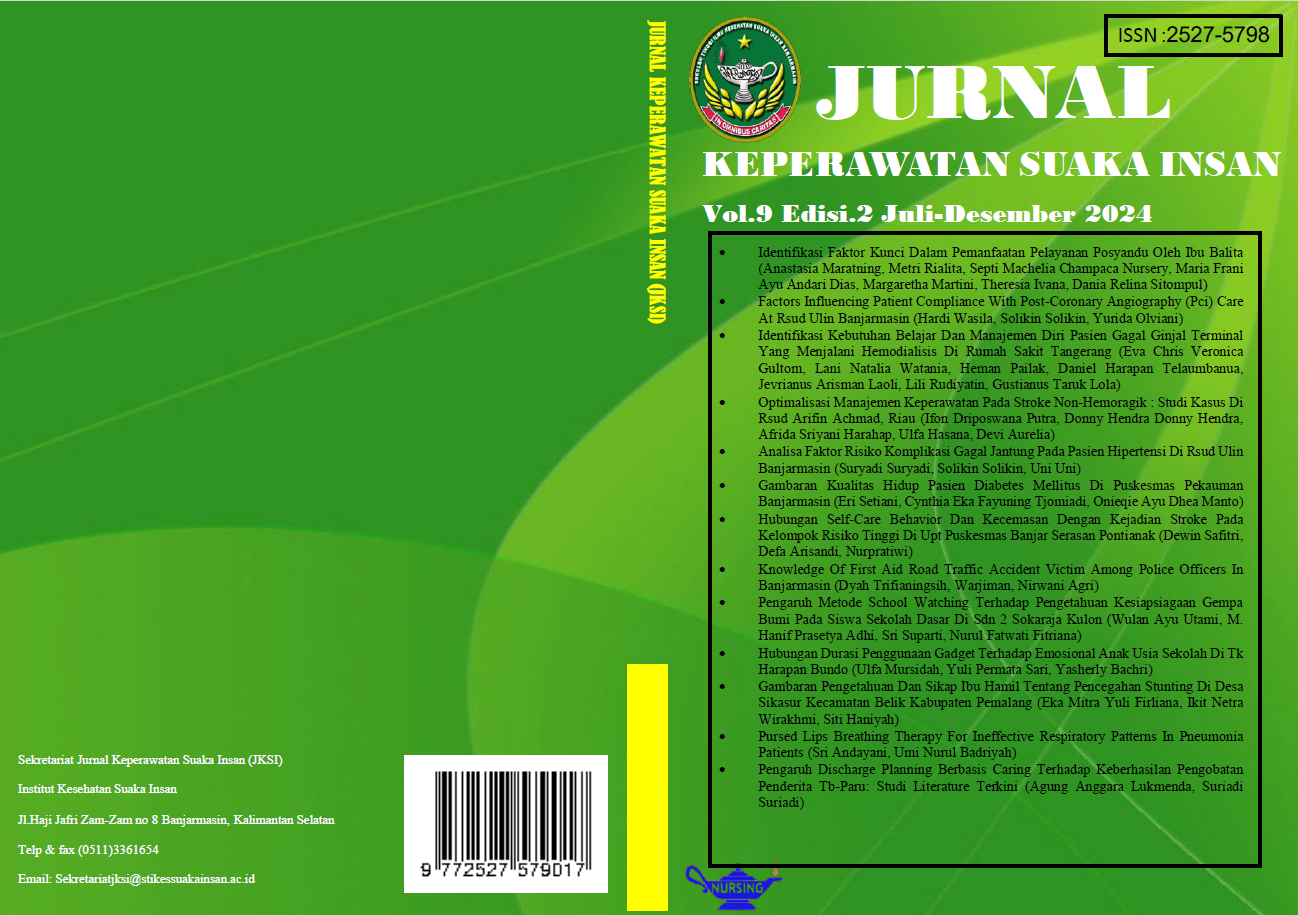ANALISA FAKTOR RISIKO KOMPLIKASI GAGAL JANTUNG PADA PASIEN HIPERTENSI DI RSUD ULIN BANJARMASIN
DOI:
https://doi.org/10.51143/jksi.v9i2.708Abstract
ABSTRACT
Hypertension is associated with an increased risk of heart failure and can lead to various complications—multiple risk factors cause heart failure. To reduce the risk of complications, it is essential to implement preventive measures and manage hypertension through lifestyle changes and medication adherence. This study design uses a correlational approach with a cross-sectional methodology. The population consisted of all hypertension patients at Ulin General Hospital, averaging 190 individuals, and the sample, calculated using Slovin's formula, included 129 respondents selected through accidental sampling. Data analysis was conducted using the Spearman rank technique. The study results show that there were 74 male respondents (57.4%), 52 elderly respondents (40.3%), 108 respondents with light physical activity (83.7%), and 112 respondents with uncontrolled hypertension (86.8%). The factor associated with heart failure complications was hypertension, whereas factors such as gender, age, and physical activity were not related to heart failure complications. Future research should use a cohort method to obtain more precise results.
Downloads
Published
How to Cite
Issue
Section
License
Copyright (c) 2024 Suryadi Suryadi, Solikin Solikin, Uni Uni

This work is licensed under a Creative Commons Attribution 4.0 International License.
Authors who publish with Jurnal Keperawatan Suaka Insan (JKSI) agree to the following terms:
1) Authors retain copyright and grant Jurnal Keperawatan Suaka Insan (JKSI) right of first publication with the work simultaneously licensed under a Creative Commons Attribution License CC BY that allows others to remix, adapt, and build upon the work with an acknowledgment of the work’s authorship and initial publication in this journal.
2) Authors are able to enter into separate, additional contractual arrangements for the non-exclusive distribution of the journal’s published version of the work (e.g., submit it to an institutional repository or publish it in a book), with an acknowledgment of its initial publication in this journal.
3)Authors are permitted and encouraged to post their work online (e.g., in institutional repositories or on their website) prior to and during the submission process, as this can lead to productive exchanges, as well as earlier and greater citation of published work (see the discussion about The Effect of Open Access).











